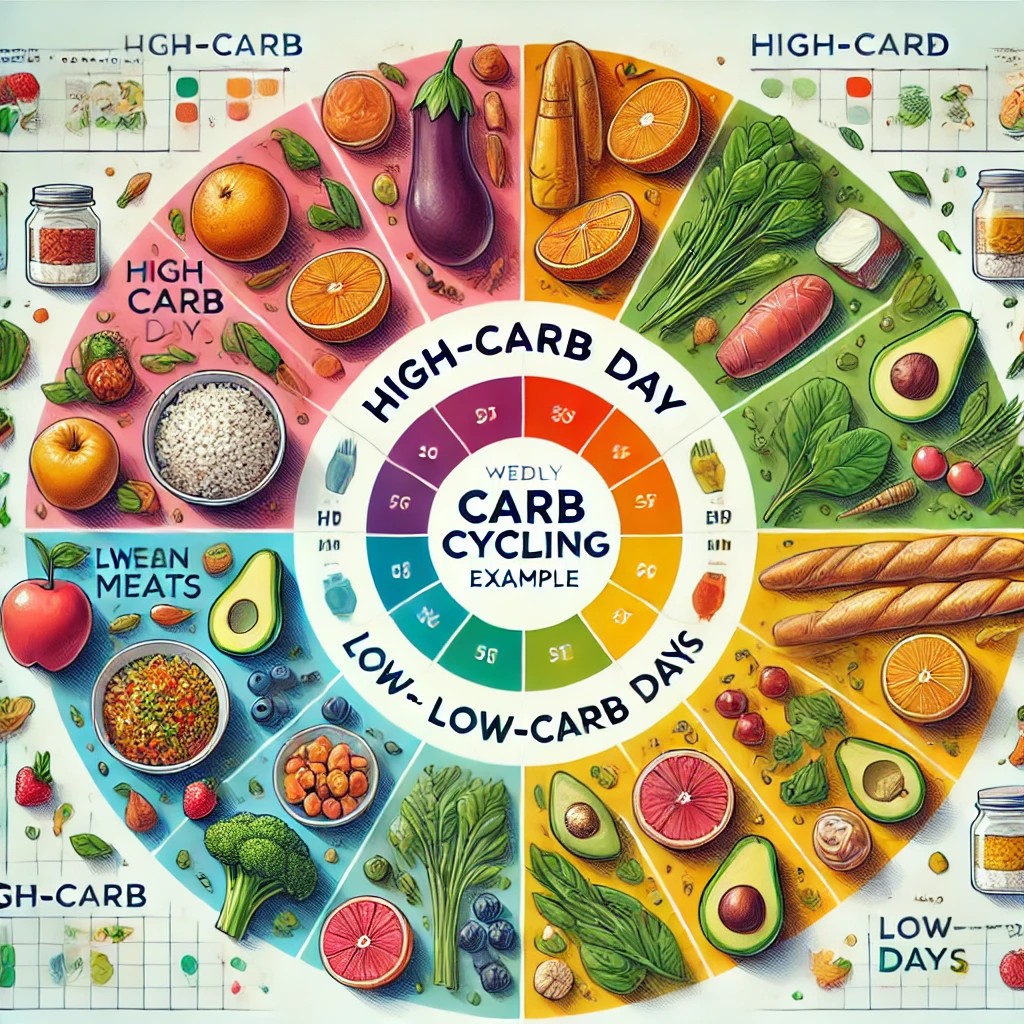Carb cycling is an advanced nutritional strategy that alternates between high-carb and low-carb days to optimize fat loss, muscle gain, and metabolic health. This method can be particularly beneficial if you are looking to enhance energy levels, support hormonal balance, and maximize fitness results. In this guide, we’ll cover how to carb-cycle, its benefits for women, a carb-cycling meal plan, and a sample schedule.
What is Carb Cycling?
Carb cycling involves switching between high, moderate, and low-carbohydrate intake days based on activity levels and fitness goals. Typically, high-carb days fuel intense workouts and muscle recovery, while low-carb days promote fat loss by encouraging the body to use fat as an energy source.
A basic carb-cycling schedule may include:
- High-Carb Days: On strength training or high-intensity workout days
- Moderate-Carb Days: On lighter workout or cardio days
- Low-Carb Days: On rest or active recovery days
Benefits of Carb Cycling for Women
1. Enhanced Fat Loss
By strategically lowering carbohydrate intake on certain days, the body taps into fat stores for energy, promoting fat loss while preserving muscle.
2. Supports Hormonal Balance
Women’s hormones fluctuate throughout the menstrual cycle, and carb cycling can help regulate insulin, cortisol, and leptin levels, improving metabolic efficiency and reducing cravings.
3. Boosts Energy and Performance
High-carb days provide necessary glycogen stores to fuel workouts, while low-carb days enhance fat adaptation, allowing steady energy levels without blood sugar crashes.
4. Preserves Lean Muscle Mass
By consuming carbohydrates strategically, women can prevent muscle loss while dieting, making it easier to maintain strength and tone.
5. Improves Insulin Sensitivity
Low-carb days improve insulin sensitivity, reducing the risk of type 2 diabetes and promoting overall metabolic health.
Carb Cycling Schedule for Women
Example 7-Day Carb Cycling Schedule:
| Day | Carbohydrate Level | Activity |
|---|---|---|
| Monday | High-Carb | Strength Training |
| Tuesday | Low-Carb | Light Cardio / Yoga |
| Wednesday | Moderate-Carb | Weight Training |
| Thursday | Low-Carb | Rest / Recovery |
| Friday | High-Carb | Strength Training |
| Saturday | Moderate-Carb | Cardio / HIIT |
| Sunday | Low-Carb | Active Recovery |

Carb Cycling Meal Plan Ideas
Here are 10 meal ideas based on different carb intake days:
High-Carb Meal Plan Ideas
- Breakfast: Oatmeal with banana, almond butter, and a protein shake.
- Lunch: Quinoa salad with grilled chicken, chickpeas, and mixed greens.
- Dinner: Brown rice with salmon, roasted sweet potatoes, and steamed broccoli.
- Snack: Greek yogurt with granola and berries.
- Post-Workout: Whole grain toast with peanut butter and honey.
Low-Carb Meal Plan Ideas
- Breakfast: Scrambled eggs with avocado and spinach.
- Lunch: Grilled chicken Caesar salad with parmesan and olive oil dressing.
- Dinner: Zucchini noodles with pesto and shrimp.
- Snack: Hard-boiled eggs with almonds.
- Post-Workout: Cottage cheese with flaxseeds.
Recommended Products for Carb Cycling
To make carb cycling easier, here are some must-have products:
- Protein Powder: click to see options
- Meal Prep Containers: Click to see recommendations
- Food Scale for Portion Control: Click to see recommendations
- Oatmeal & Whole Grains: Click to see recommendations
- Healthy Nut Butters: Check it out
- Spiralizer for Zucchini Noodles: Check it out
- Electrolyte Supplements: Check it out
Carb Cycling Calculator
To determine your ideal carb intake, use the following formula:
- High-Carb Days: 2-3g of carbs per pound of body weight
- Moderate-Carb Days: 1-1.5g of carbs per pound
- Low-Carb Days: 0.5-0.75g of carbs per pound
For example, a 150-pound woman would consume:
- High-Carb Day: 300-450g of carbs
- Moderate-Carb Day: 150-225g of carbs
- Low-Carb Day: 75-112g of carbs
Final Thoughts
Carb cycling is an effective strategy for women looking to lose fat, maintain muscle, and improve metabolic health. By adjusting carbohydrate intake based on activity levels, you can fuel workouts efficiently while optimizing fat loss. If you’re new to carb cycling, start with a simple schedule and adjust based on your energy levels and fitness goals.
